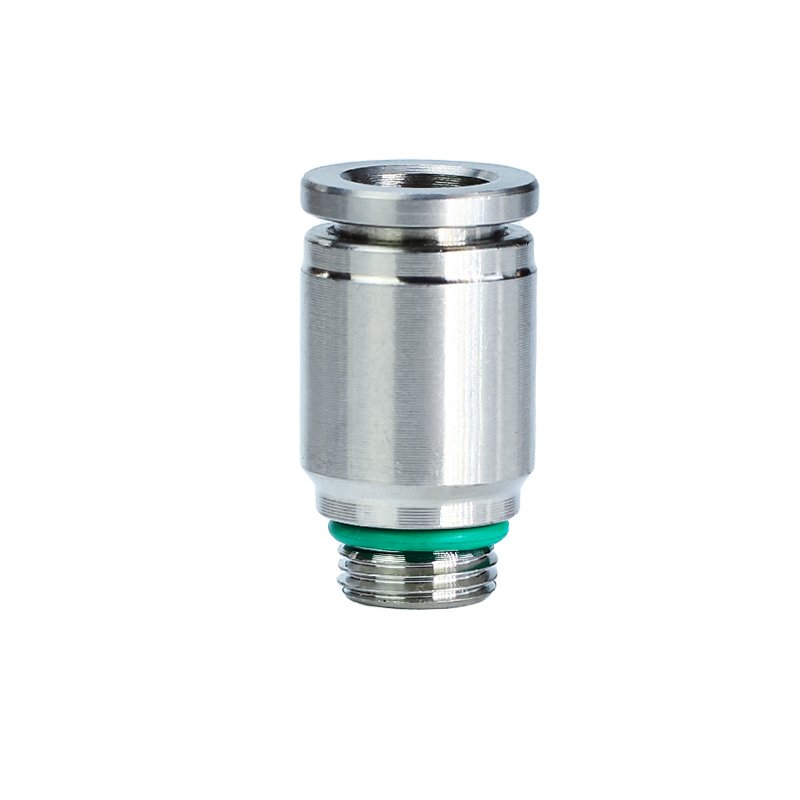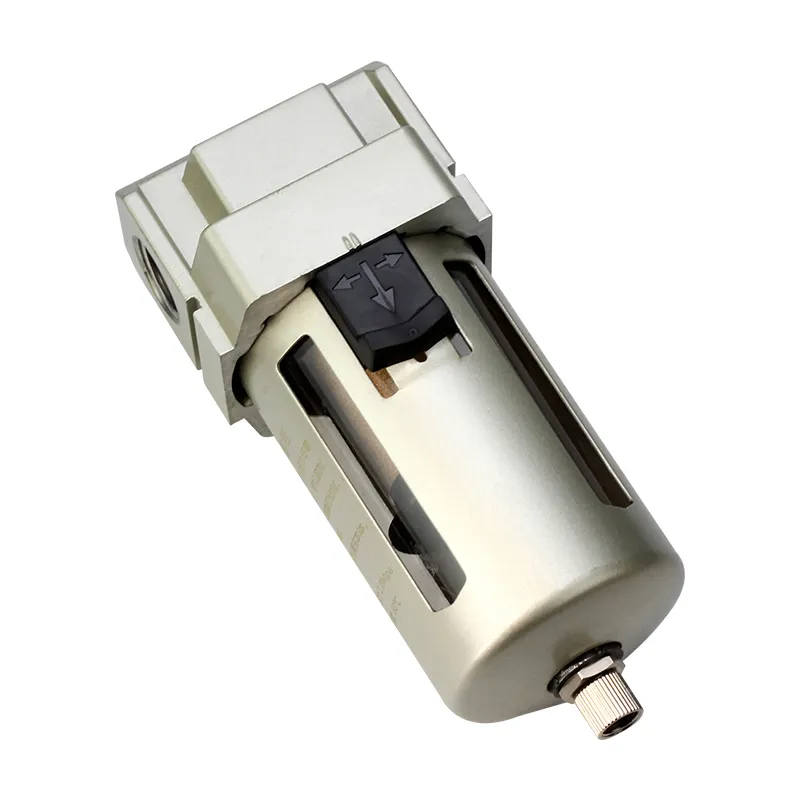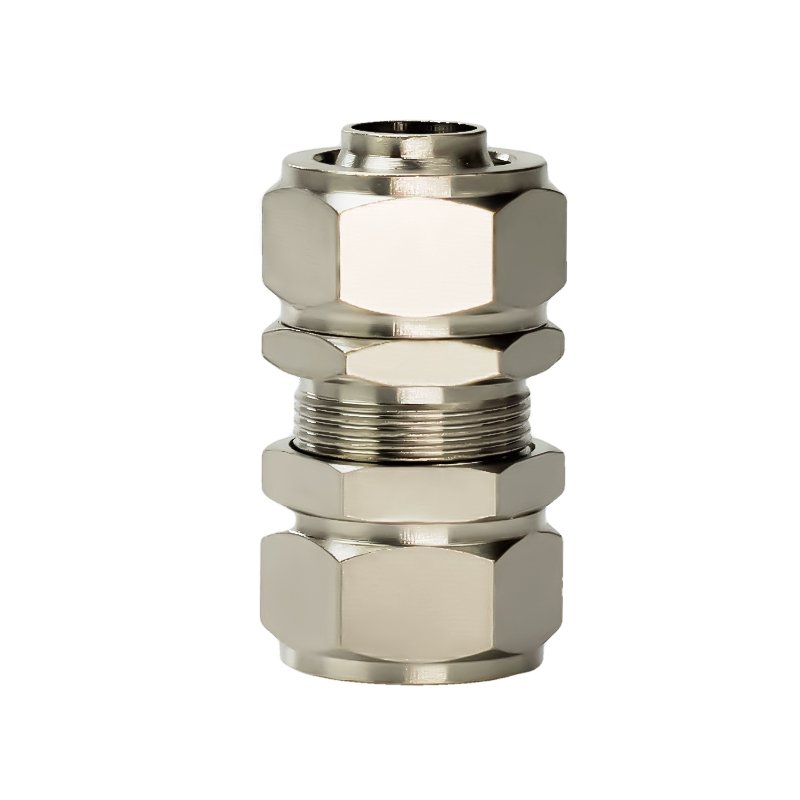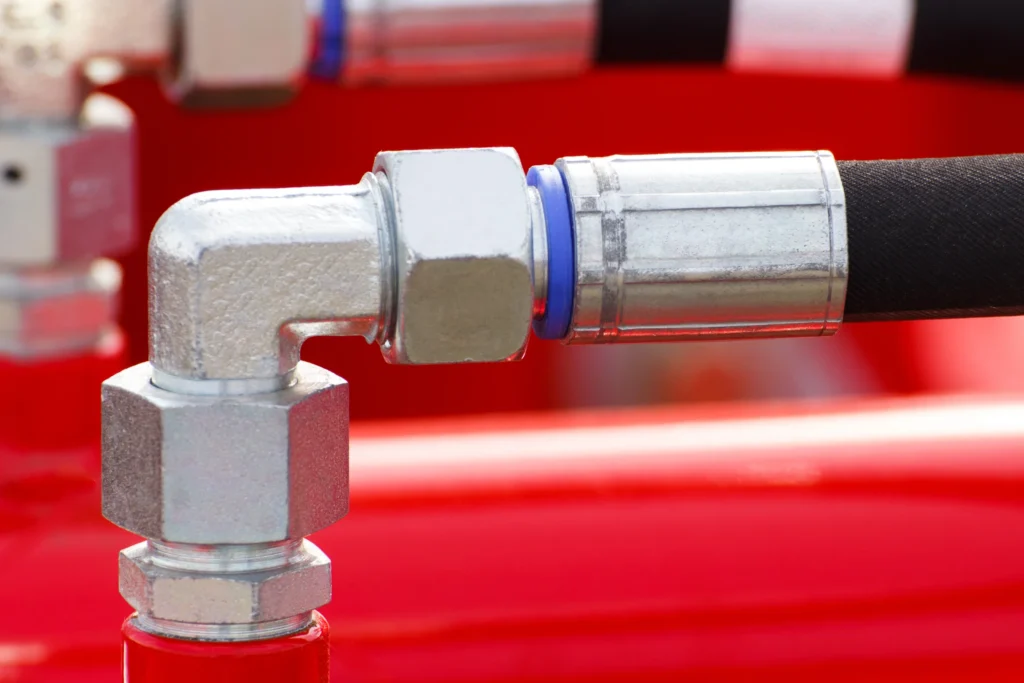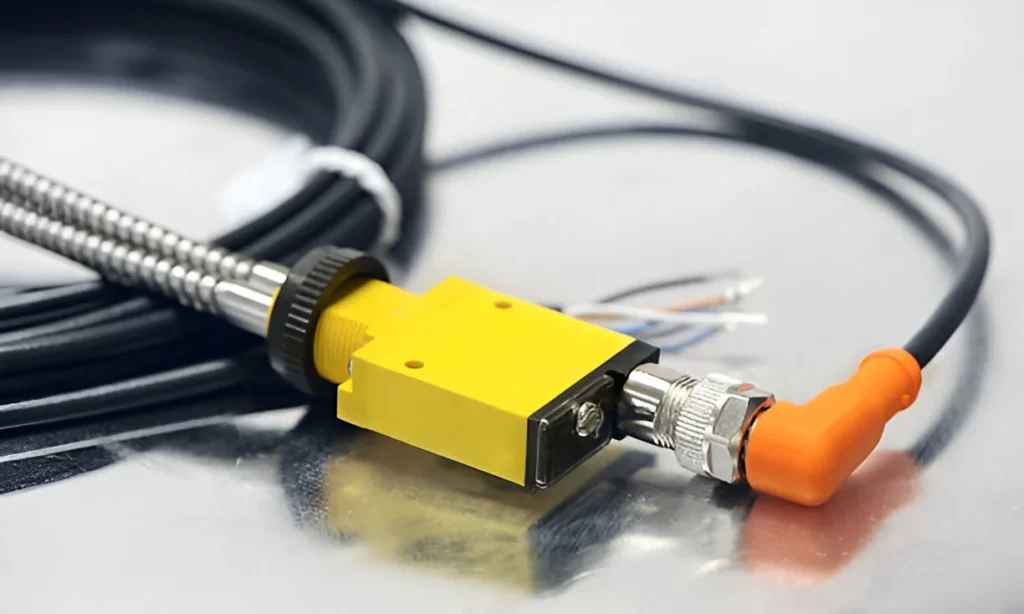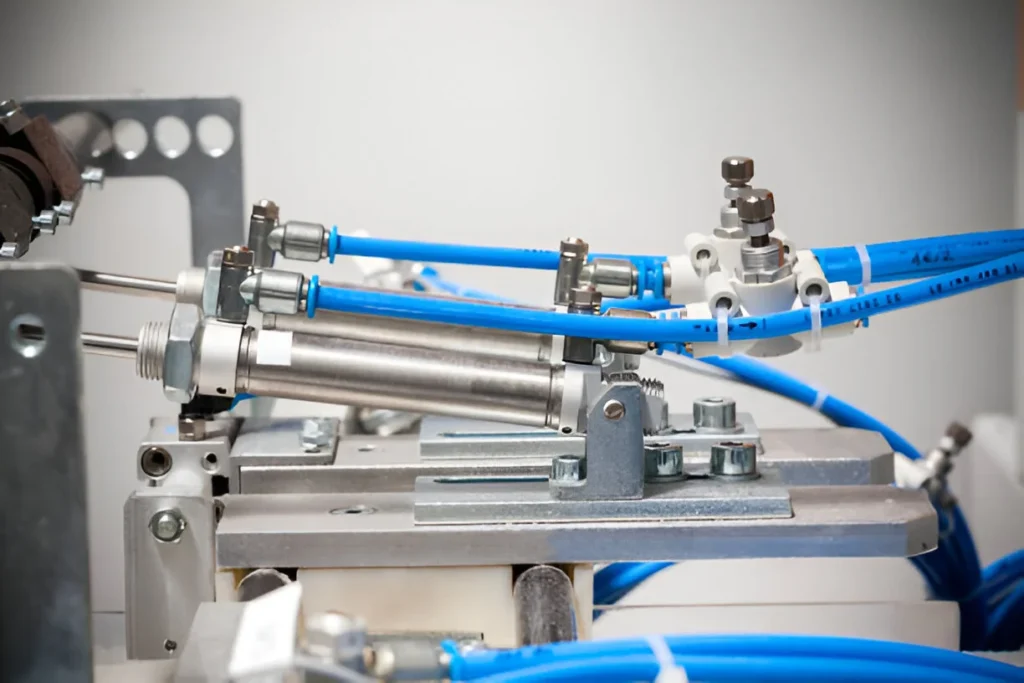Basic principles of air pressure reducing valve
Before introducing the basic principles of the air pressure reducing valve, it is first necessary to clarify its main function: regulating and stabilizing gas pressure. Air pressure reducing valves ensure safe and efficient operation of systems by converting high-pressure gas into low-pressure gas suitable for a variety of equipment and processes.
Working principle of air pressure reducing valve:
- Pressure adjustment: When high-pressure gas is input from the supply source to the pressure reducing valve, it first encounters an adjustable valve. This valve can adjust the opening degree and control the gas flow according to the preset output pressure demand.
- Pressure sensing: After the gas passes through the regulating valve, it enters a chamber equipped with a diaphragm. This diaphragm is connected to a spring, and the other end of the spring is fixed to the valve body. The main function of the diaphragm is to sense pressure changes and serve as a feedback mechanism to control the opening and closing of the valve.
- Feedback adjustment: If the output pressure is lower than the set value, the diaphragm moves due to the smaller pressure, which compresses the spring, causing the valve to open wider, increasing the gas flow, thereby increasing the pressure. On the contrary, if the output pressure exceeds the set value, the diaphragm will push the valve to move in the closing direction, reducing the gas flow, thereby reducing the output pressure.
- Stable output: Through the above feedback mechanism, the pressure reducing valve can adjust the opening and closing status of the internal valve in real time to ensure that the output pressure is maintained at the stable level set by the user. This process is dynamic and can adapt to changes in input pressure to ensure constant output pressure.
The basic principle of air pressure reducing valve relies on pressure balance and mechanical feedback mechanism to achieve precise pressure control through internal valve adjustment, diaphragm feedback and spring balance. Designed to be both simple and effective, this equipment is an integral part of many industrial and commercial applications to protect equipment, increase efficiency and ensure operational safety.
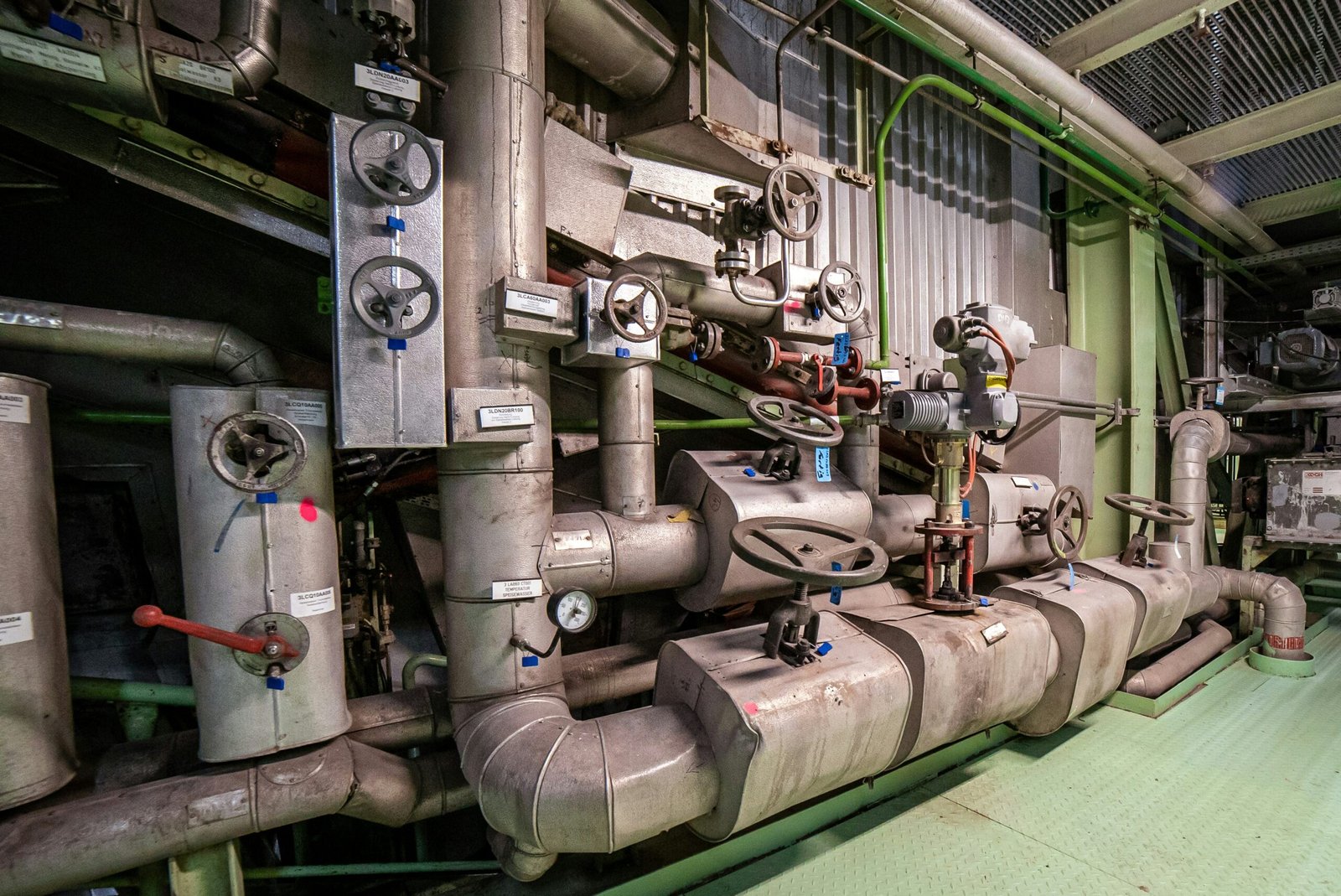
The importance of air pressure reducing valves and their impact on safety and efficiency
Air pressure reducing valves play a vital role in many industries, especially in ensuring system safety and improving work efficiency.
Ensure safety
One of the primary functions of an air pressure reducing valve is to prevent excessive gas pressure, which is essential to avoid pressure-related accidents. For example, in chemical production, gas delivery, and medical equipment, improper pressure management can lead to pipe ruptures, mechanical failures, and even fatal explosions. By using a pressure reducing valve, the pressure within the system can be effectively controlled to ensure that it operates within a safe pressure range.
Improve efficiency
In addition to safety, air pressure reducing valves also play an important role in improving the efficiency of the entire system. In many industrial applications, such as spray painting, pneumatic control systems, etc., the flow and pressure of gas need to be precisely controlled to ensure accuracy and repeatability of operations. Pressure reducing valves help equipment achieve optimal working conditions by maintaining constant output pressure, thereby improving product quality and production efficiency.
Reduce energy consumption
By optimizing gas pressure, pressure reducing valves also help reduce energy consumption. In the air supply system, unnecessary high pressure will lead to energy waste, and the pressure reducing valve can reduce this waste by adjusting the pressure to an appropriate level, making the system operation more economical and environmentally friendly.
Extend equipment life
Constant pressure output also helps extend the life of pipes and equipment. Pressure fluctuations may accelerate equipment wear and damage, especially in high-pressure environments. Therefore, the use of pressure reducing valves can avoid frequent repairs and replacements caused by excessive pressure or fluctuations, and reduce long-term maintenance costs.
Describe the different types of air pressure reducing valves and their characteristics
There are many types of air pressure reducing valves, each with its own unique design and features suitable for different application scenarios. Here are some common types of air pressure reducing valves and their key features:
1. Single-stage pressure reducing valve: The single-stage pressure reducing valve is the most basic type of pressure reducing valve and is mainly used in systems where the input pressure is not too high or the pressure fluctuation is small. It reduces gas pressure in a single regulating stage.
Features:
- Simple structure, easy to install and maintain.
- The cost is low and suitable for situations with limited economic budget.
- Not suitable for applications with large pressure fluctuations or ultra-high pressure.
2. Two-stage pressure reducing valve: The two-stage pressure reducing valve contains two pressure reducing stages and is suitable for environments with high input pressure or large pressure fluctuations. The first stage reduces most of the pressure, and the second stage makes subtle adjustments to provide a more stable output pressure.
Features:
- Provides more precise and stable pressure regulation.
- Ideal for demanding industrial applications such as laboratories or precision manufacturing.
- The structure is complex and the price is higher than that of a single-stage pressure reducing valve.
3. Diaphragm pressure reducing valve: Diaphragm pressure reducing valve uses a diaphragm as a pressure sensing element, and controls the pressure by adjusting the opening and closing of the valve through the displacement of the diaphragm.
Features:
- Fast response speed and high adjustment accuracy.
- The diaphragm has good elasticity and helps to maintain stable output pressure.
- Suitable for systems with more precise pressure requirements.
4. Piston pressure reducing valve: Piston pressure reducing valve uses a piston instead of a diaphragm as the pressure regulating element. The piston moves under the action of gas pressure and spring force to control flow.
Features:
- Rugged construction, suitable for high-pressure environments.
- Maintenance requirements are relatively high due to possible wear between the piston and cylinder.
- The accuracy is moderate and more suitable for large-scale industrial applications.
5. Proportional pressure reducing valve: Proportional pressure reducing valve accurately adjusts the output pressure through electronic control and is usually used in systems that require remote control or automated control.
Features:
- High-precision pressure regulation, which can be adjusted in real time.
- Requires power supply and control system support.
- Suitable for modern production lines with high degree of automation.
Air pressure reducing valve material and size
The material and size selection of an air pressure reducing valve has a direct impact on its performance, durability and applicability. These factors need to be carefully considered based on the specific application environment and functional requirements.
Material selection
The material of the air pressure reducing valve usually needs to consider factors such as the nature of the medium (such as whether it is corrosive), the temperature and pressure of the working environment, etc. Common materials include:
- Brass: It has good mechanical properties and corrosion resistance, relatively low cost, and is suitable for general gas and low-corrosion environments.
- Stainless steel: Excellent corrosion resistance and high temperature performance, suitable for harsh working conditions, such as high temperature or highly corrosive media.
- Bronze: More corrosion resistant than brass, making it suitable for marine applications or other highly corrosive environments.
- Aluminum: Light weight and good thermal conductivity, suitable for applications that require lightweight or high thermal conductivity.
- Plastic: Very resistant to certain chemicals and less expensive, but usually only suitable for low pressure systems.
Size selection
Pressure reducing valve sizing depends primarily on the system’s flow requirements and connection sizes. Size and flow capacity are generally proportional, and proper sizing ensures unrestricted gas flow, thereby avoiding pressure losses and flow instability. Common size indicators include:
- Diameter: The inlet and outlet diameter of the pressure reducing valve, usually selected according to the pipe size.
- Flow: The maximum flow that a pressure reducing valve should be able to handle. When selecting, ensure that the flow range of the pressure reducing valve meets the highest demands of the system.
- Connection type: including threaded connection, flange connection, etc., should match the connection method of other components in the system.

How to choose a suitable air pressure reducing valve?
Selecting the appropriate air pressure reducing valve is critical to ensuring efficient and safe operation of your system. Here are some key factors that can help you choose the right air pressure reducing valve for your specific application needs:
1. Determine the pressure range
- Input Pressure: Know your system’s maximum input pressure to select a pressure reducing valve that can withstand that pressure without damage.
- Output Pressure: Determine the required output pressure range and ensure that the pressure reducing valve can provide the appropriate pressure regulation to meet your work needs.
2. Select pressure reducing valve type
- Choose a single-stage or two-stage pressure reducing valve based on pressure stability requirements. Single-stage pressure reducing valves are suitable for situations where the input pressure is relatively stable; double-stage pressure reducing valves are suitable for situations where the input pressure fluctuates greatly and can provide a more stable output pressure.
- Consider using a diaphragm or piston pressure reducing valve. The diaphragm type is suitable for applications requiring high precision, while the piston type is more suitable for high pressure and large flow environments.
3. Material selection
- Select the appropriate material, such as stainless steel, brass or plastic, etc., according to the use environment (such as corrosive environment, temperature extremes, etc.) to ensure the durability and long-term performance of the pressure reducing valve.
4. Traffic requirements
- Determine the required maximum flow rate to select a pressure reducing valve that can meet this flow requirement to ensure that gas or air can fully flow through the system without causing pressure loss.
5. Installation and maintenance
- Consider the installation location and space constraints of the pressure reducing valve and select the appropriate size and connection type.
- Consider maintenance convenience and choose products that are easy to install, maintain and replace, especially in industrial environments with frequent maintenance.
6. Brand and quality
- Choose a well-known and reputable brand to ensure the quality and reliability of the pressure reducing valve.
- Check whether there are relevant quality certifications and guarantees, such as ISO certification, etc.
What is the difference between a compressed air pressure reducing valve and an air pressure reducing valve?
Compressed air pressure reducing valves are basically similar in function to ordinary air pressure reducing valves, and are used to reduce and control pressure to a more stable and applicable level. However, they may differ in application environment and design details, mainly in the following aspects:
1. Application environment
- Compressed Air Pressure Reducing Valve: Specifically designed to handle high pressure air in compressed air systems. These systems are commonly found in industrial production lines, pneumatic tools, and machine automation. Compressed air systems typically operate at higher pressures than air in a typical household or commercial environment, so the pressure reducing valve needs to be able to withstand the higher operating pressure.
- Ordinary air pressure reducing valve: It can be used in various low- or medium-pressure gas control systems, such as home air supply systems, medical equipment, and scientific research laboratories. The pressure requirements are usually not as stringent as compressed air systems.
2. Structure and pressure resistance
- Compressed air pressure reducing valves generally have greater pressure resistance and durability because they need to handle high-pressure air from the compressor. This type of pressure reducing valve may be made of sturdier materials, such as high-strength steel or special alloys, to prevent leakage or damage in high-pressure operating environments.
- Common air pressure reducing valves may be designed with more emphasis on precision and speed of response than extreme pressure resistance, so different materials or lighter construction may be used.
3. Performance and accuracy
- Compressed air pressure reducing valves are usually designed with higher flow capacity and fast response characteristics to accommodate the large flow rates and rapidly changing pressure demands common in compressed air systems.
- Ordinary air pressure reducing valves may focus more on providing stable and precise pressure regulation, and are suitable for applications that are sensitive to pressure changes, such as delicate laboratory operations or medical equipment.
4. Security features
- Due to the high-pressure nature of compressed air systems, compressed air pressure reducing valves may be equipped with additional safety features, such as safety relief valves, to protect the system from overpressure.
- Although ordinary air pressure reducing valves also have basic safety features, their design may be more focused on safety and reliability in daily use rather than extreme conditions in high-pressure environments.
Application cases of air pressure reducing valves in different industries
Air pressure reducing valves are widely used in many industries because of their key function of regulating pressure. Here are some examples of air pressure reducing valve applications in specific industries:
1. Manufacturing
In the manufacturing industry, air pressure reducing valves are widely used in pneumatic tools, automated machinery and production lines. For example, in automobile manufacturing, pressure reducing valves are used to control the pressure in painting equipment to ensure a uniform and flawless coating. At the same time, pneumatic assembly tools such as wrenches and drills also rely on pressure reducing valves to regulate and stabilize operating pressure to ensure assembly quality and worker safety.
2. Healthcare
In the medical industry, air pressure reducing valves are used in ventilators and anesthesia equipment to ensure a constant and safe gas mixture for patients. For example, ventilators use pressure-reducing valves to precisely control the pressure of oxygen and other gases to suit a patient’s specific breathing needs.
3. Food and Beverages
In the food and beverage industry, pressure reducing valves are used to control gas pressure in packaging machinery to ensure the integrity and hygiene of food packaging. In addition, pressure reducing valves are also required during the carbonization process of beer and carbonated drinks to adjust the CO2 injection pressure to ensure the quality and taste of the drinks.
4. Energy industry
In the energy industry, especially the gas and oil industry, air pressure reducing valves are used to regulate pressure from high-pressure transmission pipelines to distribution systems. This is a critical component to ensure safe conveyance and distribution, preventing pipeline ruptures and leaks.
5. Laboratory and scientific research
Research laboratories use air pressure reducing valves to precisely control the pressure of various gases used in experiments, ensuring accuracy and repeatability of experimental results. For example, chemical reactions and biological cultures often need to be carried out under strictly controlled air pressure conditions.
6. Environmental protection industry
In sewage treatment and waste gas treatment facilities, air pressure reducing valves are used to control the pressure in the gas delivery system to optimize treatment efficiency and ensure the stable operation of environmental protection equipment.
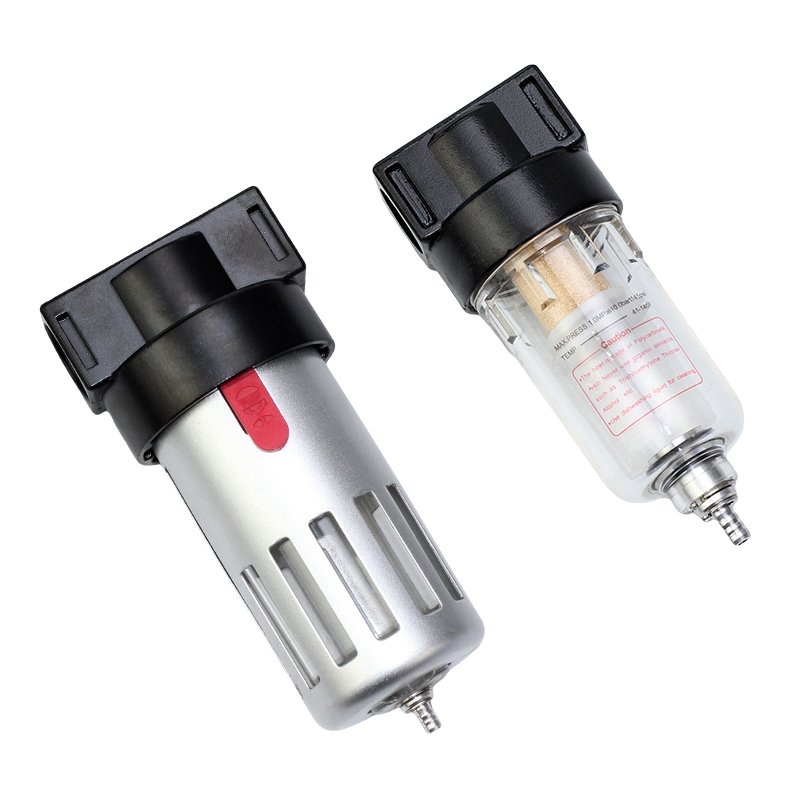
Air pressure reducing valve FAQ
1. How does the air pressure reducing valve work?
The air pressure reducing valve uses an internal regulating mechanism, such as a diaphragm and spring system, to control the flow of gas through the valve, thereby reducing the pressure of the gas. When the output pressure exceeds the set value, the diaphragm moves and adjusts the opening and closing of the valve through a mechanical linkage to maintain a constant output pressure.
2. How to choose a suitable air pressure reducing valve?
When selecting a suitable air pressure reducing valve, the following factors should be considered: input and output pressure requirements, required flow rate, nature of the working medium (such as whether it is corrosive), environmental conditions (such as temperature and humidity), valve material and size. Make sure the pressure reducing valve selected meets the requirements of the specific application.
3. What is the difference between single-stage and double-stage pressure reducing valves?
Single-stage pressure reducing valves contain a pressure reducing stage and are suitable for applications where the input pressure is relatively stable. The two-stage pressure reducing valve contains two stages of pressure reduction. The first stage reduces most of the pressure, and the second stage performs fine adjustments. It is more suitable for applications with large pressure fluctuations and can provide a more stable output pressure.
4. What are the common maintenance tasks for air pressure reducing valves?
Maintaining an air pressure reducing valve typically involves regularly checking for leaks, cleaning filters, and inspecting and replacing worn parts such as diaphragms and springs. It is recommended that maintenance be performed in accordance with the manufacturer’s instruction manual to ensure valve performance and extend service life.
5. What are the common signs of a failed air pressure reducing valve?
Common signs of failure include unstable output pressure, gas leakage, abnormal noise, etc. These problems can be caused by internal parts that are worn, dirty, or damaged. When these signs are discovered, timely inspection and repair should be carried out.
6. How to install the air pressure reducing valve correctly?
When installing an air pressure reducing valve, ensure that the valve body is oriented in the direction of gas flow and follow the instructions provided by the manufacturer. Make sure all connections are well sealed to prevent leaks. In addition, the installation location should facilitate future maintenance and inspection.

